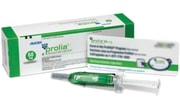Benifits of different tree leaves for teas and survival.
Young tree leaves are the best to eat. This is one of the most important lessons when it comes to harvesting edible tree leaves.
When your delicious spinach leaves and lettuce leaves bolt, or go to seed, you know that they become tough and bitter. The same is true of these edible tree leaves. They are best harvested in the spring or off of new growth that is young and tender.
Article continues below.
Late season leaves are going to be the most bitter and the most fibrous.
Want to save this post for later? Click Here to Pin It On Pinterest!
How to Eat Tree Leaves
Of course, you can just tear them off and chew them up. I would recommend you get a little more creative if you want to add edible tree leaves to your diet.Foraged Salads
If you are out foraging wild edible tree leaves then you might as well forage some other edible greens, too. Plan on adding all of these foraged foods together to create some kind of simple salad. You can even mix foraged foods with salad lettuces from your own garden.Purees
Wild edible tree leaves can be added to smoothies or even pureed and added to soups and pesto.Fresh or Dried Teas
Tea is a great way to enjoy wild edibles like tree leaves. Drying the leaves will make them last longer but having tea leaves that are fresh often has a different kind of flavor.Wraps
Larger edible leaves can be used to wrap up things like rice or meat stuffings.11 Trees With Edible Leaves
1. Maple

Maple trees require a bit of work up front depending on the species. Young Japanese maple leaves can be battered and fried. Larger maple leaves are supposed to be layered in a container and dusted with salt then left in a cool dark place for up to 10 months!
The process sounds crazy, but this is how you can preserve the leaves. Batter fried, they are dusted with powdered sugar as a tasty treat. Maybe even drizzled with a little maple syrup?
Want to prep but not sure where to begin?
Click Here to Get Your FREE One Year Urban Survival Plan!
2. Mulberry
The mulberries get all the love when we are talking about this tree. Few people take advantage of the wild edible leaves as a resource. Mulberry leaves always reminded me of puzzle pieces. They are one of the rare trees, like sassafras, that has a few different shapes of leaves on a single tree.There are five segmented leaves that look like stars with rounded edges, then there are fuller, thicker versions of these leaves and finally there is a leaf that looks like a mitten. All three of these will be present on the mulberry tree.
The leaves of the mulberry tree should only be eaten in the spring. They are delicious and can either be eaten raw or used to make tea. The mulberry tree has a lot to offer a forager.
3. Birch
If you are into prepping and survival skills, then you gotta know the birch tree. Willow, walnut and birch are some of the most important trees for you to identify. Birch bark is an incredible tinder source, and the wood is great for making fireThe young tender leaves of the white birch are a pretty bitter but will taste great with a sweet dressing and other leaves to balance that bitterness. Birch makes a bitter tea that can sweetened with honey. It contains methyl salicylate much like willow.
4. Sassafras
The trident and the mitten. That is what you are looking for in the soft and fragrant leaves of the sassafras tree. It has a very distinct smell like that of root beer. That is because the root is an essential ingredient.The leaves can be eaten in soups, salads and even on sandwiches. They have a strong taste and aroma, so you should be aware of that when you are using it. I think sassafras works really well with pork if you are looking to add it to a sandwich or main dish.
5. Willow
Among the preppers and survivalists, the willow tree is known for its pain relieving and fever reducing bark. Most don’t know that the leaves are very high in Vitamin C. They are tender but can be very bitter.They are one of the edible tree leaves that should be added to a mixture of salad greens and enjoyed that way. Think of it like a radicchio or endive. Those bitter salad greens have their place but are not eaten on their own.
6. Hawthorn
The haws of the hawthorn are the fruity prize, but even before they show up you can eat hawthorn leaves. These leaves are a real treat in the spring. While they are young and pale, they can be plucked and eaten as is.Hawthorn leaves are rich and even have a little bit of a nutty flavor. They are a great hiking snack if you find yourself in a forest of hawthorn.
7. Beech
The brilliant shade of the beech tree, with its large trunk and often foraged beech nut make it a tree that most foragers easily recognize. However, most people do not know that the young spring leaves of the beech can be sauteed with other early spring treats like spinach and radish tops.Beech can be easily identified by its massive bell shaped growth. It also has a large base trunk. The edible tree leaves are pale green, oval shaped with well-defined ribs along the leaf.
8. Lime
Though lime does not grow all over the nation, lime leaf is a staple ingredient in some very popular dishes, like good curry. Lime leaves impart incredible flavor and are delicious when added to wild edible teas.Want to prep but not sure where to begin?
Click Here to Get Your FREE One Year Urban Survival Plan!
They are smooth and oval shaped but much too leathery to be chewed up and eaten. Some people just chew the lime leaf and spit it out.
9. Goji
Goji berries are a well known superfood. However, the leaves are small and delicious when sauteed or stir fried. This makes the Goji tree, which is pretty much a big shrub, full of edible parts and pieces!These leaves are small and ovate. They can be mixed with meats or other greens and cooked with lots of garlic and maybe even a squeeze of lemon.
10. Pine Needles
Young pine needles from trees like the white pine have amazing immune boosting benefits. You will consume these wild edible leaves in the form of a tea. However, do not turn your nose up. This tea has 250mg of Vitamin C per cup!11. Walnut
The walnut tree is incredible. While the leaves are very astringent, it is an important leaf when it comes to making things like medicinal teas. The leaves can be harvested and dried. Walnut tea is not something you would consume daily but the essence of the leaves is edible and medicinal.Walnut leaves are easy to gather, hang, and dry so that during the winter you can have that medicinal tea, too!
Safe Identification
While there are many different species of edible tree leaves there are also many that are poisonous. Positive ID is all about safety. If you are new to foraging trees, then you should get a book like the Audubon Field Guide to Trees. You can also refer to the internet for a few different pictures of the leaves you are trying to identify.Be thorough and be safe out there!
Conclusion
Trees are an incredible resource that can be utilized through all four seasons. The wild edible leaves of trees are a food source that most people overlook. Be sure you harvest early and dry what you do not use. Most of the trees on this list have nuts or fruits that are beneficial, too.Forage the trees around you and get to know them well. Our ancestors have long used the trees to feed and heal themselves.
Like this post? Don’t Forget to Pin It On Pinterest!
You May Also Like:
- 7 Trees Every Survivalist Should Know
- The Art Of Cooking With Leaves (Pics & Recipes Inside)
- 20 Trees Every Prepper Should Know
- 25 Wild Edibles You Can Find In The City
- 15 Survival Plants That Are Both Edible AND Medicinal
417
SHARES
Want To Prep But Not Sure Where To Begin?
Sign Up for Our Newsletter and Get Your FREE One Year Urban Survival Plan!SEND IT
We won't send you spam. Unsubscribe at any time.
You May Also Like:

25 Wild Edibles That Might Be In Your Backyard

The Survival Tree You've Seen But Haven't Recognized

The One Tree That Every Survivalist Should Plant
Subscribe
Login
2 COMMENTS
Newest
Buckeye Larry
8 months ago
I’m looking for a foraging book/guide that has good pictures and can pack in my bag – does anyone have any suggestions?
0
Reply
Kitty
8 months ago
It should be pointed out that people who are allergic to aspirin and NSAIDS should not consume natural sources of salicylic acid such as willow. It isn’t as concentrated but can still trigger a reaction.
Several trees have edible blossoms in the spring which may appear before the leaves or with young leaves. Maple blossoms taste much like they smell, like a mild lettuce with a hint of maple syrup sweetness. Can use as a garnish, salad ingredient or trailside nibble. Best collected after rain has washed away some of the pollen. Linden flowers are used to make a sweet and aromatic tea. Those are the only ones I have tried.
Maple keys have edible kernels – haven’t tried them yet but plan to.
0
Reply
TOP POSTS
© Copyright 2010-2022 Urban Survival Site · All Rights Reserved
Contact Us · Disclosure · Privacy · Terms of Use · Direct Ad Sales · Site Map
Facebook · Pinterest · Twitter
* Urban Survival Site is a participant in the Amazon Services LLC Associates Program, an affiliate advertising program designed to provide a means for us to earn fees by linking to Amazon.com and affiliated sites.
Using young tree leaves survival and teas





